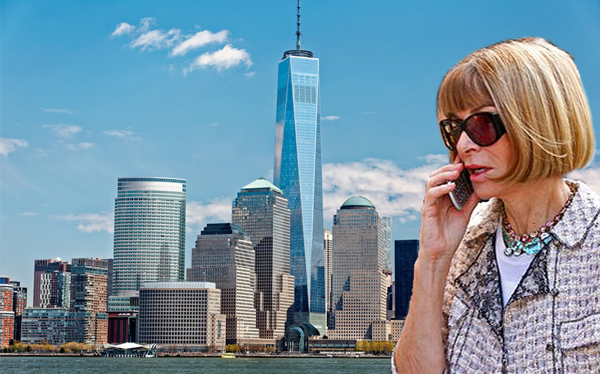Trending
Condé Nast mulling decision to sublet space at 1 WTC
Move could add to an influx of sublease availability Downtown

Condé Nast’s 1 million-square-foot lease at One World Trade Center in 2011 heralded Lower Manhattan’s post-9/11 revival. But now, the media giant is considering scaling back its presence at the soaring office tower.
The publisher of glossy magazine titles such as Vogue, the New Yorker and Vanity Fair hired a team at JLL to help it evaluate options for several underutilized floors among the 24 it occupies in the 1,776-foot-tall tower, sources told The Real Deal.
Those options include consolidating the company’s footprint within the building and putting several floors on the sublet market, or relocating outside business units to the 104-story tower.
A source with knowledge of the company’s plans, who was not authorized to speak about them publicly, said the space “could definitely be used more efficiently.”
But the company’s already started to consolidate its footprint in Lower Manhattan as its dealt with challenges facing the publishing industry.
In September, it shuttered Style.com just nine months after moving into the online fashion retail space. And, in November, the company ended the print run of Teen Vogue magazine, a move that resulted in the loss of 80 jobs.
A representative for Condé Nast declined to comment.
Condé recently sublet space it leases just a few blocks from the Trade Center and relocated those employees to its headquarters. The company signed a lease in 2013 for 80,000 square feet in the 31-story building at 222 Broadway at the corner of Fulton Street. Late last year its digital publishing arm sublet nearly 26,000 square feet in the building to the marketing company Cheetah Digital and another 27,000 square feet to online advertising agency Talaria.
The publisher signed a 25-year lease in 2011 with the Port Authority of New York and New Jersey and the Durst Organization to relocate its headquarters downtown from Durst’s 4 Times Square. (As part of the deal, the Port Authority agreed to pick up the tab for Condé Nast’s rent on the vacant space in Times Square, some of which Durst has since leased.)
The move to Lower Manhattan not only signified that the neighborhood was an acceptable – and even desirable – location for tech and media tenants, but helped to rejuvenate the downtown leasing scene that had been pummeled by an exodus of companies in the wake of the 9/11 terror attacks.
But some of those companies are starting to have second thoughts about their deals. The Bank of New York Mellon is vacating the 350,000 square feet it signed up for at Brookfield Place in 2014 when it sold its former headquarters at One Wall Street to Harry Macklowe, the Wall Street Journal reported.
Jessica Lappin, president of the Alliance for Downtown New York, said leasing activity has been robust in Lower Manhattan, which had its best year since 2014 last year with 5.5 million square feet leased – a 63 percent increase over 2016.
“I would say it’s not unusual in the real estate industry for people to sign long-term leases, and as their needs change that space gets recycled to other users,” she said. “It’s par for the course.”
But should a flood of sublet space hit the market Downtown, it could impact available space across the neighborhood, such as Silverstein Properties’ 3 World Trade Center, which will reportedly have about 1.6 million square feet of available space after finalizing a deal with consulting firm McKinsey to lease 200,000 square feet.
Landlords are particularly keen to keep their eyes on the sublet availability level because tenants looking to sublet their space almost always market it at prices below space directly offered by building owners, which puts downward pressure on their rents as they compete with those sub-landlords.
Sublet availability in Lower Manhattan to its highest level since 2013 at the end of last year, according to CBRE. The sublet rate stood at 1.9 percent during the fourth quarter, and the 1.7 million square feet of available sublet space was the highest annual total since 2010, according to the brokerage.




